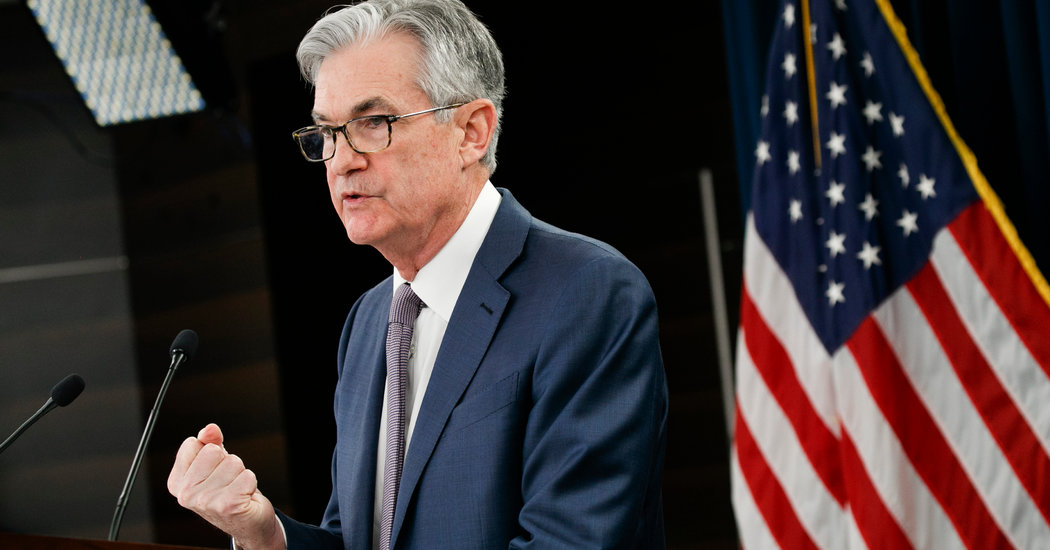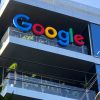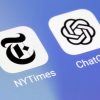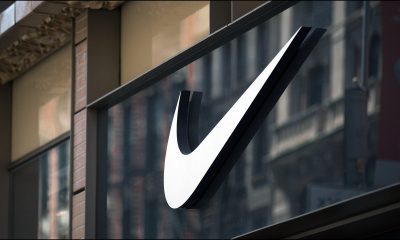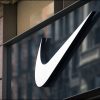MARKETING NEWS
Fed Caps Dividends and Limits Buybacks by Big Banks
WASHINGTON — The Federal Reserve on Thursday temporarily restricted shareholder payouts by the nation’s biggest banks, barring them from buying back their own stocks or increasing dividend payments in the third quarter as regulators try to ensure banks remain strong enough to keep lending through the pandemic-induced downturn.The decision to limit payouts is an admission by the Fed that large financial institutions, while far better off than they were in the financial crisis, remain vulnerable to an economic downturn unlike any other in modern history. With virus cases across the United States still surging and business activity subdued, it remains unclear when and how robustly the economy will recover.Some of the Fed’s own loss projections for banks, in fact, suggest that the eventual hit to loans in a bad scenario could be far worse than in the aftermath of 2008.Still, the Fed stopped short of barring banks from paying dividends next quarter, as some lawmakers and former regulators have urged — a decision that drew public criticism from one of the Fed’s current governors, who said not taking stronger measures could “impair the recovery.”The Fed, which devised its primary stress test scenarios before the virus tore through the economy, will require the 34 biggest banks to resubmit and update their capital plans later this year, something it has usually required only for banks that failed to pass. Those plans detail how the banks intend to proceed with share buybacks and dividend increases in light of the pandemic, and the Fed said that resubmitting them “will help firms reassess their capital needs.”It will also allow the Fed to reserve the right to run additional analyses, and potentially restrict payouts further, down the road.“Today’s actions by the board to preserve the high levels of capital in the U.S. banking system are an acknowledgment of both the strength of our largest banks as well as the high degree of uncertainty we face,” Randal K. Quarles, the Fed’s vice chairman of supervision, said in a statement.The central bank’s annual stress tests assess how the banks would fare under dire scenarios that include high unemployment and severe market turbulence. While those tests are meant to be hypothetical, this year’s scenarios were set before the pandemic, and some of the economic projections now look benign compared to reality. To compensate for that, the Fed ran an additional analysis to gauge how the banks would perform under coronavirus recessions of varying severity.The hypothetical scenarios included a sharp bounce-back, an extended “U”-shaped downturn, and a double-dip “W” recession.In aggregate, under those severe analyses, loan losses for the 34 banks ranged from $560 billion to $700 billion, and overall capital ratios declined from 12 percent in the fourth quarter of 2019 to between 9.5 percent and 7.7 percent.The Fed did not release results for individual banks, as it does with the annual stress tests. But it did show that about a quarter of banks would nearly breach minimum capital ratios in a double-dip recession scenario, based on the report.Given those results, the central bank will cap dividends to the amount paid in the second quarter, with an additional limitation based on recent earnings. While the eight largest banks had voluntarily suspended share buybacks through the second quarter, the Fed’s move will broaden and extend that limitation.The Financial Services Forum, which represents the chief executives of the biggest U.S. banks, issued a muted statement saying that its members “appreciate the Federal Reserve’s work to promote financial stability during such extraordinary economic uncertainty and understand its decision regarding capital returns through the third quarter.”Others felt that the Fed could have gone further to shore up the financial system. Officials could have placed formal restrictions on shareholder payouts earlier in the coronavirus crisis, and the decision to do so now is a sign that regulators believe the financial system could face threats if the downturn drags on. But the fact that the Fed’s demands are not stricter could limit the amount of buffer that banks have on hand to absorb losses and make loans to households and companies should borrowers struggle to repay debts over the coming months.“A lot of this seems to be about preserving options,” said Daniel Tarullo, a former Fed governor and the original architect of much of the stress-testing regime who is now at Harvard. “That’s inconsistent with the idea of acting early in response to a major shock.”Lael Brainard, a Fed governor who was nominated and confirmed during the Obama administration, objected to the fact that banks are still allowed to pay out dividends in any fashion.“The payouts will amount to a depletion of loss-absorbing capital,” she wrote in a statement. “This is inconsistent with the purpose of the stress tests, which is to be forward-looking by preserving resilience, not backward-looking by authorizing payouts based on net income from past quarters that had already been paid out.”
Updated June 24, 2020
Is it harder to exercise while wearing a mask?
A commentary published this month on the website of the British Journal of Sports Medicine points out that covering your face during exercise “comes with issues of potential breathing restriction and discomfort” and requires “balancing benefits versus possible adverse events.” Masks do alter exercise, says Cedric X. Bryant, the president and chief science officer of the American Council on Exercise, a nonprofit organization that funds exercise research and certifies fitness professionals. “In my personal experience,” he says, “heart rates are higher at the same relative intensity when you wear a mask.” Some people also could experience lightheadedness during familiar workouts while masked, says Len Kravitz, a professor of exercise science at the University of New Mexico.
I’ve heard about a treatment called dexamethasone. Does it work?
The steroid, dexamethasone, is the first treatment shown to reduce mortality in severely ill patients, according to scientists in Britain. The drug appears to reduce inflammation caused by the immune system, protecting the tissues. In the study, dexamethasone reduced deaths of patients on ventilators by one-third, and deaths of patients on oxygen by one-fifth.
What is pandemic paid leave?
The coronavirus emergency relief package gives many American workers paid leave if they need to take time off because of the virus. It gives qualified workers two weeks of paid sick leave if they are ill, quarantined or seeking diagnosis or preventive care for coronavirus, or if they are caring for sick family members. It gives 12 weeks of paid leave to people caring for children whose schools are closed or whose child care provider is unavailable because of the coronavirus. It is the first time the United States has had widespread federally mandated paid leave, and includes people who don’t typically get such benefits, like part-time and gig economy workers. But the measure excludes at least half of private-sector workers, including those at the country’s largest employers, and gives small employers significant leeway to deny leave.
Does asymptomatic transmission of Covid-19 happen?
So far, the evidence seems to show it does. A widely cited paper published in April suggests that people are most infectious about two days before the onset of coronavirus symptoms and estimated that 44 percent of new infections were a result of transmission from people who were not yet showing symptoms. Recently, a top expert at the World Health Organization stated that transmission of the coronavirus by people who did not have symptoms was “very rare,” but she later walked back that statement.
What’s the risk of catching coronavirus from a surface?
Touching contaminated objects and then infecting ourselves with the germs is not typically how the virus spreads. But it can happen. A number of studies of flu, rhinovirus, coronavirus and other microbes have shown that respiratory illnesses, including the new coronavirus, can spread by touching contaminated surfaces, particularly in places like day care centers, offices and hospitals. But a long chain of events has to happen for the disease to spread that way. The best way to protect yourself from coronavirus — whether it’s surface transmission or close human contact — is still social distancing, washing your hands, not touching your face and wearing masks.
How does blood type influence coronavirus?
A study by European scientists is the first to document a strong statistical link between genetic variations and Covid-19, the illness caused by the coronavirus. Having Type A blood was linked to a 50 percent increase in the likelihood that a patient would need to get oxygen or to go on a ventilator, according to the new study.
How many people have lost their jobs due to coronavirus in the U.S.?
The unemployment rate fell to 13.3 percent in May, the Labor Department said on June 5, an unexpected improvement in the nation’s job market as hiring rebounded faster than economists expected. Economists had forecast the unemployment rate to increase to as much as 20 percent, after it hit 14.7 percent in April, which was the highest since the government began keeping official statistics after World War II. But the unemployment rate dipped instead, with employers adding 2.5 million jobs, after more than 20 million jobs were lost in April.
What are the symptoms of coronavirus?
Common symptoms include fever, a dry cough, fatigue and difficulty breathing or shortness of breath. Some of these symptoms overlap with those of the flu, making detection difficult, but runny noses and stuffy sinuses are less common. The C.D.C. has also added chills, muscle pain, sore throat, headache and a new loss of the sense of taste or smell as symptoms to look out for. Most people fall ill five to seven days after exposure, but symptoms may appear in as few as two days or as many as 14 days.
How can I protect myself while flying?
If air travel is unavoidable, there are some steps you can take to protect yourself. Most important: Wash your hands often, and stop touching your face. If possible, choose a window seat. A study from Emory University found that during flu season, the safest place to sit on a plane is by a window, as people sitting in window seats had less contact with potentially sick people. Disinfect hard surfaces. When you get to your seat and your hands are clean, use disinfecting wipes to clean the hard surfaces at your seat like the head and arm rest, the seatbelt buckle, the remote, screen, seat back pocket and the tray table. If the seat is hard and nonporous or leather or pleather, you can wipe that down, too. (Using wipes on upholstered seats could lead to a wet seat and spreading of germs rather than killing them.)
What should I do if I feel sick?
If you’ve been exposed to the coronavirus or think you have, and have a fever or symptoms like a cough or difficulty breathing, call a doctor. They should give you advice on whether you should be tested, how to get tested, and how to seek medical treatment without potentially infecting or exposing others.
Banks have been pushing the Fed to allow them to continue paying dividends, worried that restricting the regular payouts will hit their stock prices. But watchdog groups have been critical of the Fed’s leniency, pointing out that in the 2008 financial crisis, officials allowed money to walk out the door by failing to curb payouts, worsening the financial situation for struggling banks that ultimately failed.For the largest banks, buybacks make up a bigger share of overall capital distributions while dividends are a smaller chunk. Of the $143 billion that the six biggest banks spent on capital distributions last year, $107 billion went to buybacks and $36 billion to dividends.Even without across-the-board dividend restrictions, the performance on the normal stress tests could hamper some banks’ ability to continue payouts.JPMorgan Chase, Citigroup, Bank of America and Wells Fargo, the four largest banks in the United States, all came through the stress tests with sufficient capital, according to a New York Times analysis of the Fed’s results. But capital at the fifth largest, Goldman Sachs, fell slightly below the required level, according to the analysis. The result could complicate any plans the Wall Street firm had for paying out capital to its shareholders if it doesn’t rise to the required amount by late this year as part of a new regulatory framework.The Fed’s stress tests were introduced after the 2008 financial crisis as a way of making sure regulators had an up-to-date grasp of the risks in the banking system — something they lacked before the housing market crash. The exams focus on how much capital a bank would have left after the different stress scenarios.Capital is money banks don’t have to pay back to creditors and depositors. The more capital they have, the more losses they can theoretically absorb.Investors appear to have doubts about how the banks will perform in the recession.Bank stocks are down by nearly a third this year, compared with a 5 percent decline for the S&P 500 stock index. Unlike in 2008, the banks aren’t the epicenter of the crisis and have actually experienced large inflows of money rather than outflows. Lending to corporations soared in the first quarter as companies drew on their credit lines and trading revenue surged at banks with large Wall Street operations. But their first-quarter earnings took a hit as they added billions of dollars to their loan loss reserves in anticipation of widespread defaults.The Fed’s sensitivity analysis on Thursday suggested that banks could see a 10.3 percent four-quarter loan loss rate if the economy experiences a protracted downturn, and a 9.9 percent rate in the case of a double-dip recession. Those figures exceed the rates experienced by banks in the global financial crisis, when a smaller number of financial institutions experienced loss rates of 6.8 percent.Back then, an early version of the stress test estimated that loss rates could total 9.1 percent over nine quarters.That said, the sensitivity analyses were not full stress tests and did have some limitations. For instance, they did not incorporate the effects of government supports like the Paycheck Protection Program, which has funneled money to small businesses to keep them paying bills during widespread shutdowns.
Source link



